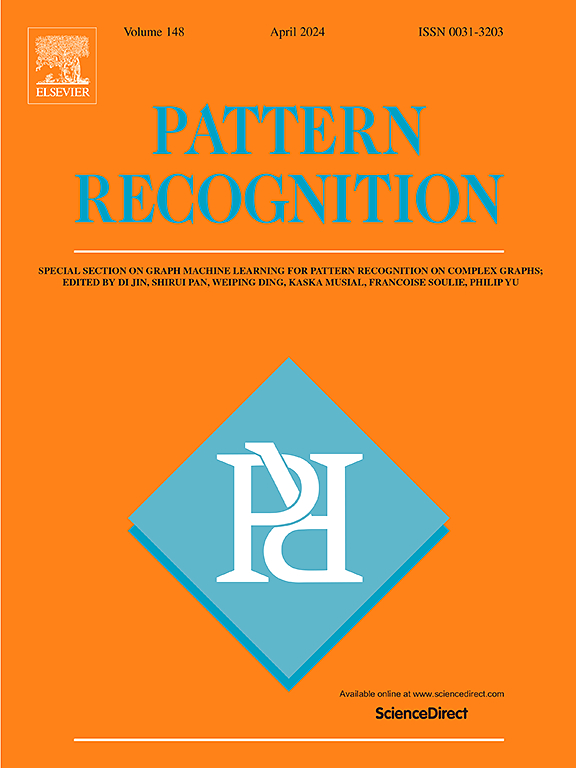Data augmentation strategies for semi-supervised medical image segmentation
IF 7.5
1区 计算机科学
Q1 COMPUTER SCIENCE, ARTIFICIAL INTELLIGENCE
引用次数: 0
Abstract
Exploiting unlabeled and labeled data augmentations has become considerably important for semi-supervised medical image segmentation tasks. However, existing data augmentation methods, such as Cut-mix and generative models, typically dependent on consistency regularization or ignore data correlation between slices. To address cognitive biases problems, we propose two novel data augmentation strategies and a Dual Attention-guided Consistency network (DACNet) to improve semi-supervised medical image segmentation performance significantly. For labeled data augmentation, we randomly crop and stitch annotated data rather than unlabeled data to create mixed annotated data, which breaks the anatomical structures and introduces voxel-level uncertainty in limited annotated data. For unlabeled data augmentation, we combine the diffusion model with the Laplacian pyramid fusion strategy to generate unlabeled data with higher slice correlation. To enhance the decoders to learn different semantic but discriminative features, we propose the DACNet to achieve structural differentiation by introducing spatial and channel attention into the decoders. Extensive experiments are conducted to show the effectiveness and generalization of our approach. Specifically, our proposed labeled and unlabeled data augmentation strategies improved accuracy by 0.3% to 16.49% and 0.22% to 1.72%, respectively, when compared with various state-of-the-art semi-supervised methods. Furthermore, our DACNet outperforms existing methods on three medical datasets (91.72% dice score with 20% labeled data on the LA dataset). Source code will be publicly available at https://github.com/Oubit1/DACNet.
半监督医学图像分割的数据增强策略
在半监督医学图像分割任务中,利用非标记和标记数据增强已变得相当重要。然而,现有的数据扩增方法,如剪切混合和生成模型,通常依赖于一致性正则化或忽略切片之间的数据相关性。为了解决认知偏差问题,我们提出了两种新型数据增强策略和双注意力引导一致性网络(DACNet),以显著提高半监督医学图像分割性能。在标注数据扩增方面,我们随机裁剪和拼接标注数据而非非标注数据,以创建混合标注数据,从而打破解剖结构,并在有限的标注数据中引入体素级不确定性。在非标注数据增强方面,我们将扩散模型与拉普拉卡方金字塔融合策略相结合,生成具有更高切片相关性的非标注数据。为了增强解码器学习不同语义但具有区分性的特征,我们提出了 DACNet,通过在解码器中引入空间和通道注意力来实现结构区分。我们进行了广泛的实验,以展示我们方法的有效性和通用性。具体来说,与各种最先进的半监督方法相比,我们提出的标记和非标记数据增强策略分别提高了 0.3% 至 16.49% 和 0.22% 至 1.72% 的准确率。此外,我们的 DACNet 在三个医学数据集上的表现优于现有方法(在洛杉矶数据集上,使用 20% 的标记数据,骰子得分率为 91.72%)。源代码将在 https://github.com/Oubit1/DACNet 公开。
本文章由计算机程序翻译,如有差异,请以英文原文为准。
求助全文
约1分钟内获得全文
求助全文
来源期刊

Pattern Recognition
工程技术-工程:电子与电气
CiteScore
14.40
自引率
16.20%
发文量
683
审稿时长
5.6 months
期刊介绍:
The field of Pattern Recognition is both mature and rapidly evolving, playing a crucial role in various related fields such as computer vision, image processing, text analysis, and neural networks. It closely intersects with machine learning and is being applied in emerging areas like biometrics, bioinformatics, multimedia data analysis, and data science. The journal Pattern Recognition, established half a century ago during the early days of computer science, has since grown significantly in scope and influence.
 求助内容:
求助内容: 应助结果提醒方式:
应助结果提醒方式:


